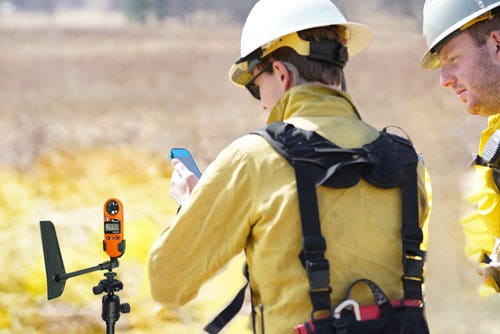The Unpredictable Force: Exploring the Impact of Wind on Wildfire Spread

The impact of wildfires reaches far beyond their immediate location. Just take the recent Canadian wildfires, for example. Thanks to wind and weather conditions, the thick smoke traveled all the way to the US East Coast, blanketing large areas. Not only did this lead to hazy skies and a blood-red sun, but it also raised concerns about air quality. According to the National Interagency Fire Center (NIFC) between January and May alone, a staggering 18,015 fires ravaged 510,058 acres in the US. That's a significant amount of land affected by these destructive fires.*
Wildfire-prone areas are particularly susceptible to the impact of windy conditions. Strong winds can greatly exacerbate the spread and intensity of wildfires, making them more challenging to contain and control. Here are some key points to consider regarding wildfire and windy conditions:
Rapid Fire Spread: High winds can accelerate the spread of wildfires by carrying embers and burning debris over long distances. This allows fires to jump firebreaks, roads, and other barriers, making containment efforts more difficult.
Increased Fire Intensity: Windy conditions supply wildfires with additional oxygen, helping them burn more fiercely. This can result in hotter flames, greater fuel consumption, and the creation of fire whirls or firestorms, which pose a significant threat to both property and lives.
Directional Changes: Strong winds can cause rapid changes in the direction and behavior of wildfires. This unpredictability makes firefighting efforts more challenging, as firefighters must adjust their strategies and tactics on the fly to counter the changing fire behavior.
Spotting: Wind-blown embers can ignite new fires ahead of the main fire front, leading to the rapid expansion of the fire. This spotting phenomenon is especially dangerous during windy conditions, as it can lead to the formation of fire lines that are difficult to control.
Safety Hazards: High winds create hazardous conditions for firefighters, making it more dangerous for them to work near the fire. The combination of strong winds, smoke, and intense heat can jeopardize the safety of firefighting personnel, limiting their ability to directly engage with the fire.
Evacuation Challenges: Windy conditions can hinder evacuation efforts, as it becomes more difficult to safely transport people out of affected areas. Strong winds can also hamper the effectiveness of aerial firefighting operations, such as water drops from helicopters and fixed-wing aircraft.

It is crucial for authorities and communities in wildfire-prone regions to closely monitor weather conditions, especially wind speeds and directions. Early warning systems, evacuation plans, and public awareness campaigns can help mitigate the risks associated with wildfires and prepare residents for potential windy conditions that may fuel fire growth.
-Maurcio M., Wildland Firefighter
Kestrel fire weather meters and monitors play a crucial role in assisting firefighters as they battle the destructive force of wildfires. These rugged, reliable devices provide essential real-time weather information that aids in assessing fire behavior, sharing data, and making informed tactical decisions. With features such as wind speed and direction measurement, temperature and humidity readings, and instant PIG and FDFM calculations, Kestrel fire weather meters offer a comprehensive understanding of a fire's atmospheric conditions. This data enables firefighters to anticipate changes in fire behavior, identify potential fire spread patterns, and determine the most effective strategies for containment and suppression. By equipping firefighters and FBANs with accurate and up-to-date weather information, Kestrel fire weather meters empower them to respond swiftly and strategically, improving overall safety and operational efficiency in the challenging battle against wildfire blazes.
Learn more about the trusted The 3550FW Fire Weather Meter with built-in PIG and FDFM is a powerful standalone monitoring solution. The Kestrel Fire Weather Kit combines the 5500FW meter with Wind Vane Mount and collapsible tripod with the DROPFW data logger – all packed into one sturdy, compact case for easily tossing in the truck.
*Source: NOAA National Centers for Environmental Information, Monthly Wildfires Report for May 2023, published online June 2023





